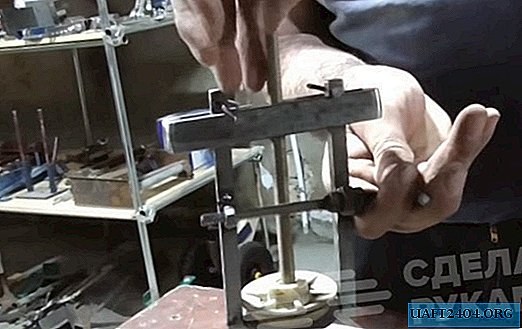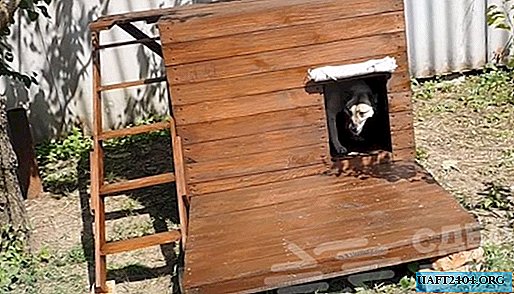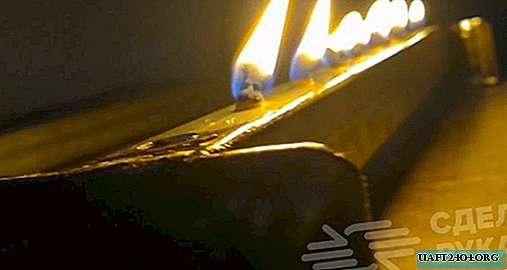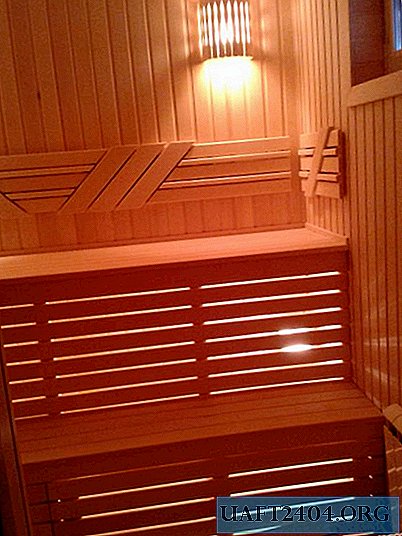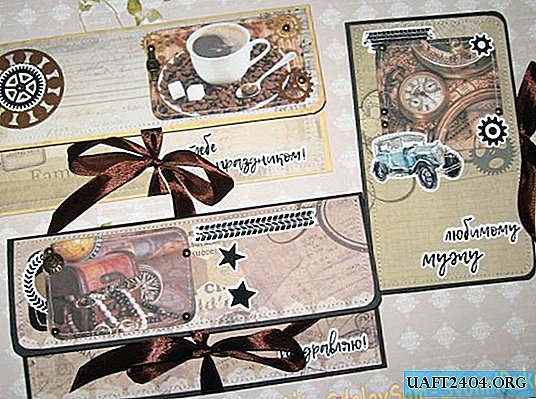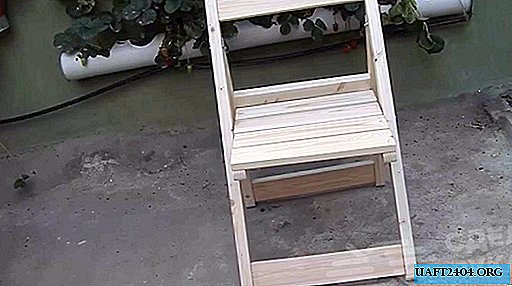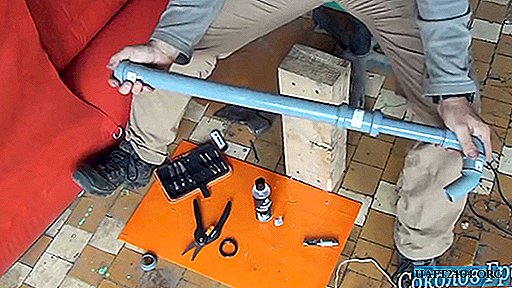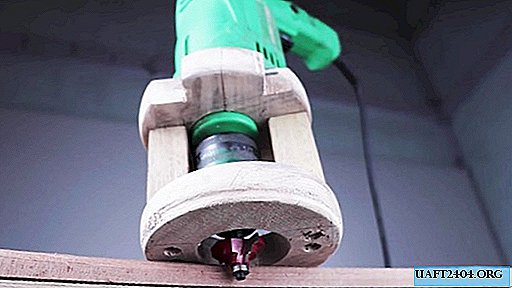Share
Pin
Tweet
Send
Share
Send
- Beads No. 10 of the preferred color, in this case blue, cyan, green and a little yellow;
- Wire 0.2 or 0.3 mm thick;
- Florenta or green thread floss;
- Clay Moment and PVA;
- Plaster or alabaster;
- A small flower pot or, if not, a bowl;
- Green acrylic paint or gouache;
- A piece of green sisal.
Violet is made in loop technique. There will be 9 flowers, but more can be done. Each individual flower is woven immediately solid, so we cut off the wire immediately about 60-70 cm, so that it is definitely enough and not necessary, then reel pieces. String 6 blue beads on a wire and twist them into a loop.
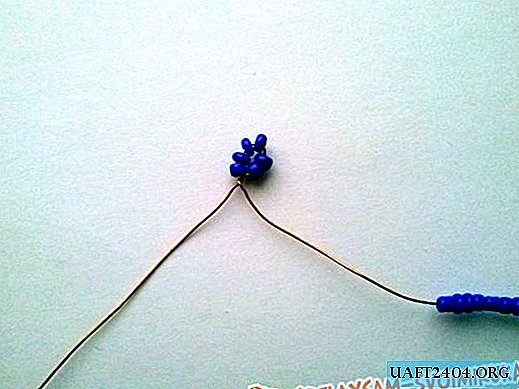
a couple of revolutions, while stepping back from the end of the wire 10 cm. For the next loop, which will pass over the first, we gain approximately 15-17 pcs. and twist at the base.

We make a similar loop again with a lot of beads.

To make a fringe on the petals, you need beads of a contrasting color, in this case it is blue. At the long end of the wire, we collect an approximate amount of beads and thread it under the last loop of the petal.

We measure 6-7 blue beads and fix the wire tightly between 5 and 6 blue beads on the petal itself.

So it is necessary to do 5 times, so that in the end you get a “fringe”.

At the end, we fix the wire at the base as usual. On the remaining working piece of wire, it is necessary to weave another 4 similar petals. To do this, deviate from the first about 1 cm and weave according to the scheme of the first.


It turns out 5 petals and 2 remaining ends of the wire, which so far do not need to be twisted together.

Now you need to make the yellow stamens. Everything is done in the same looping technique.

Next, insert the wire with stamens in the middle of the flower, after which we twist the ends of the wire together, while straightening the petals evenly.

By the way, one flower can be made in the form of an unopened bud.
Leaflets.
Now we proceed to the manufacture of leaflets. To do this, you need beads of dark green and light green, but you can also make plain. Dark will go along the edge of the leaf and inside as dots. We will weave using the French weaving technique. First you need to cut off the wires about 60 cm., Retreat from one end of 15 cm, and make a loop on it.

The loop itself will be a leg, we do not need it yet, we will weave the sheet itself on a short single piece of wire - this will be the base, the long length will be working. On the base we string 13 beads.

On a long working end, string an arbitrary amount of beads. Lift it up to the base and tightly connect with it at an angle of 45 degrees, twisting one revolution at the top.

Then we lower the wire down to the loop and twist in two turns.

Since the leaf will be carved, we will continue to do as follows. We again string the beads on the long end of the wire and thread it under the loop, after which we pass this wire tightly between the beads.

We do the same in the reverse order to the loop.

So we continue to do it several times until we get 5 notches on each side of the leaf. When it is ready, the base will need to be carefully cut, leaving at the same time 0.5 cm of wire, which should be bent inside out.
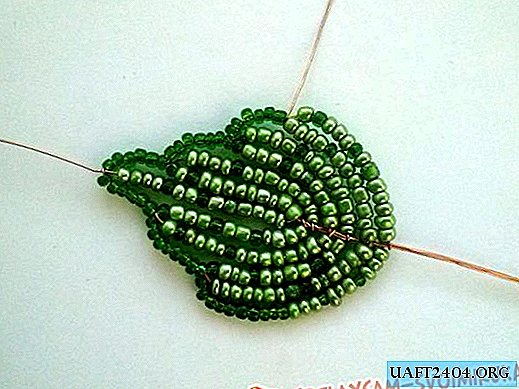

Leaves need to be made 9 pieces, but another quantity is possible. Now you need to wrap the legs of leaves and flowers with green florenta or, who does not have it, with green thread floss in several folds, previously coating the wire with PVA glue.

Cut a small piece of ribbon and with a sticky side, wrap the legs of flowers and leaves from the base along a curve. So wrap all the details.


To form violets, we twist together 3-4 flowers all with the same florent, we get 3 groups, which are also then joined together.

Now you need to attach leaflets to the bouquet. We will do this in 2 tiers. In the first there will be 4 sheets, in the second - 5.

The output will be a bunch of violets, which now will need to be planted in a pot.
Decor.
If there is no pot, do not despair. Everyone in the house has cylinders, for example from under mounting foam or the like, here the cap from him in this case will be used. The flower will be planted in alabaster or gypsum, which must be diluted with warm water to the density of sour cream.


Then, until it is frozen, pour the mass into a pot and plant the violet there. It is necessary to hold it a bit until the gypsum hardens.

Now proceed to the design. We will need the following materials. A napkin is needed to decorate the container. It is better to buy it on a fabric basis.

When the gypsum has dried, paint it with green paint and wait until it dries completely. Then glue on a gypsum with a moment glue a piece of sisal.


Now you need to measure and cut off a piece of the required size from the napkin. Coat the pot or cap with glue Moment and glue the cut piece of napkin to it so that the joints are even. It remains only to spread beautifully flowers and leaves of violets and enjoy the beauty made by yourself.

Share
Pin
Tweet
Send
Share
Send

